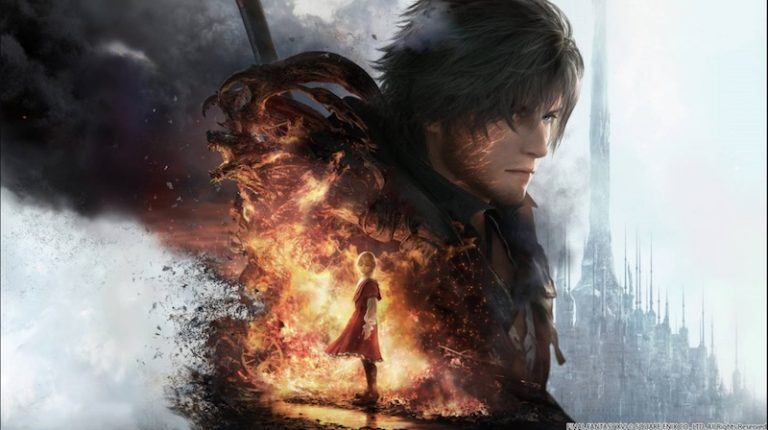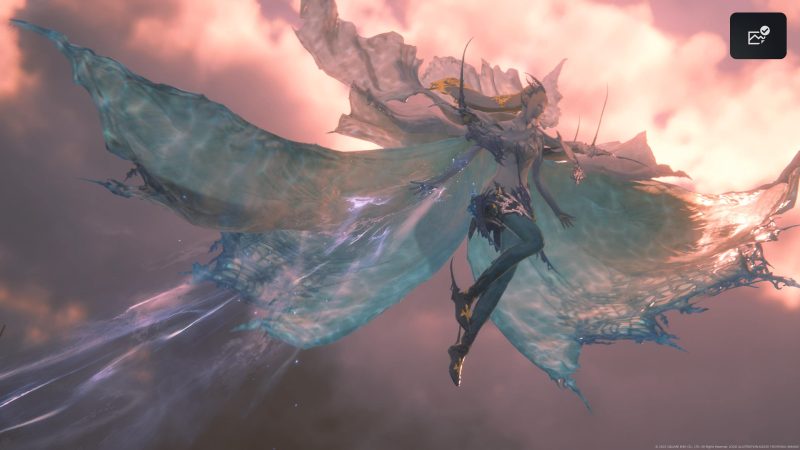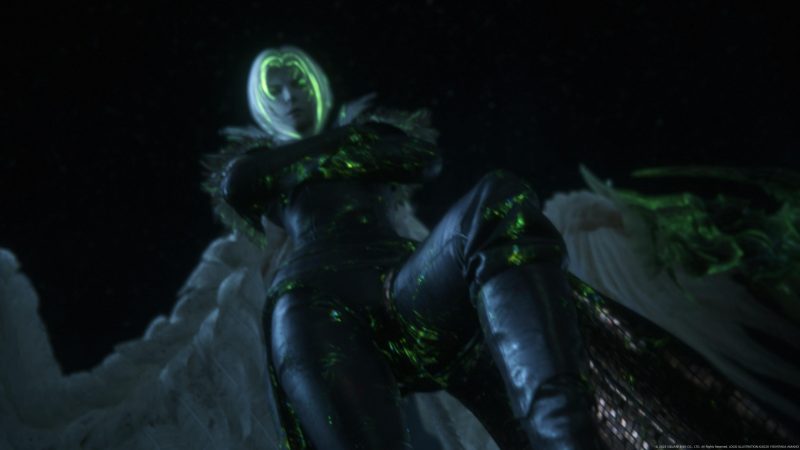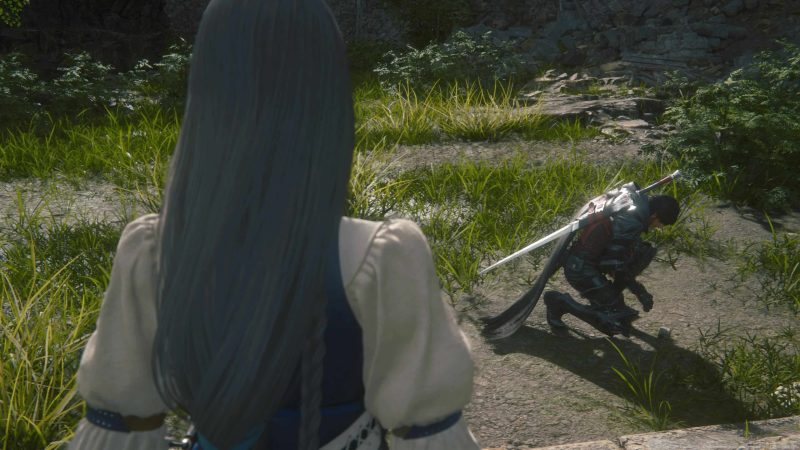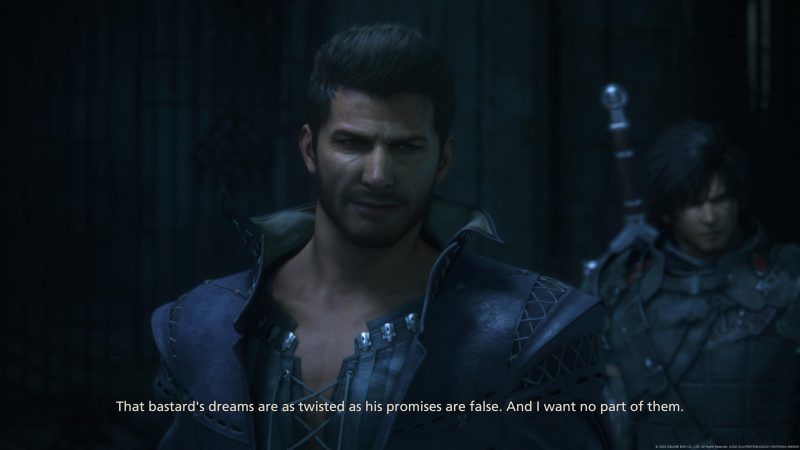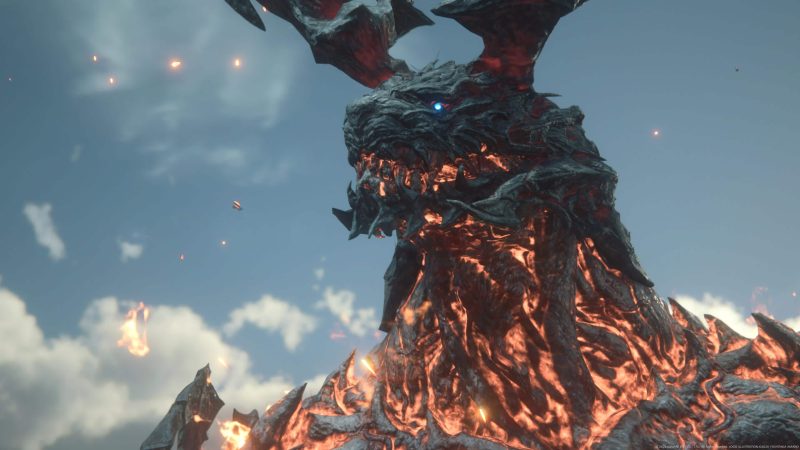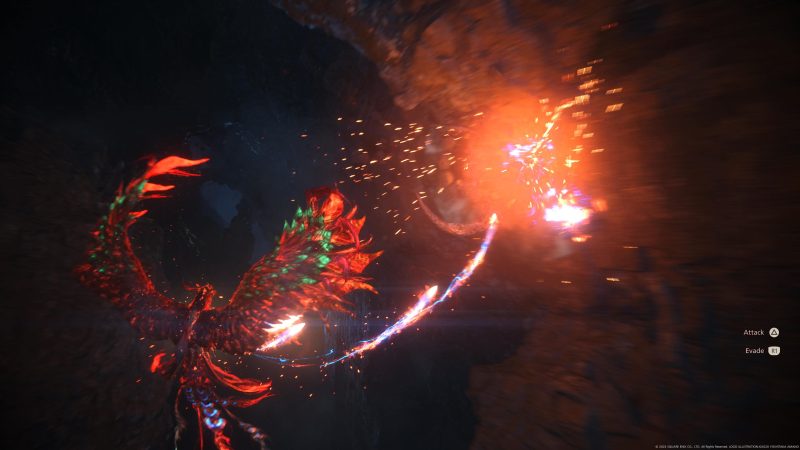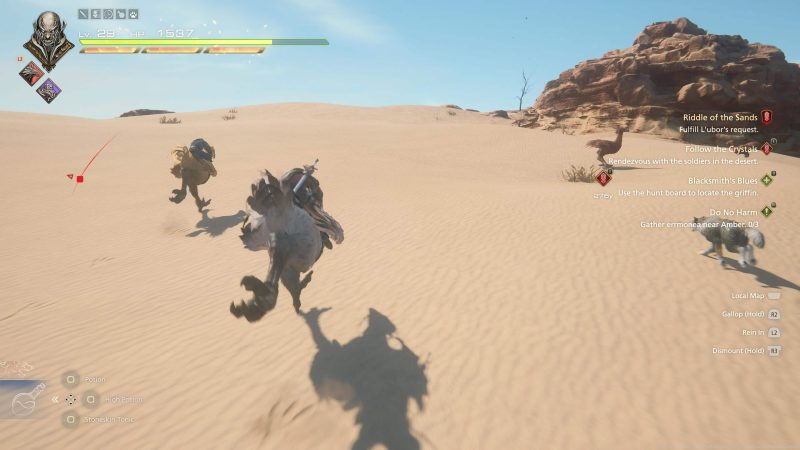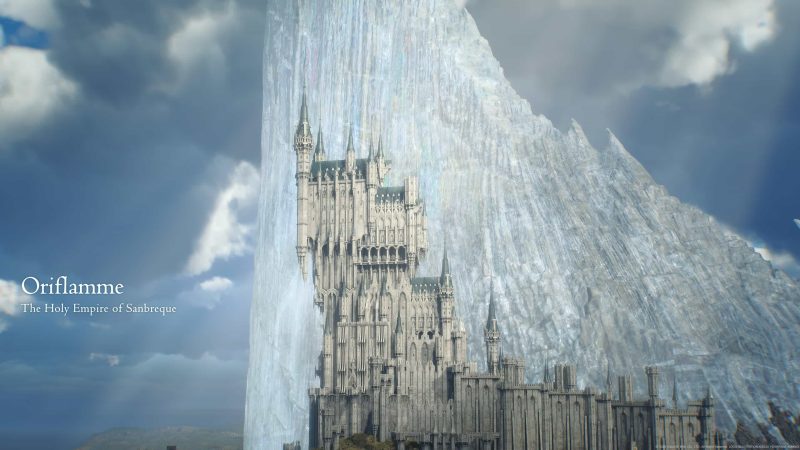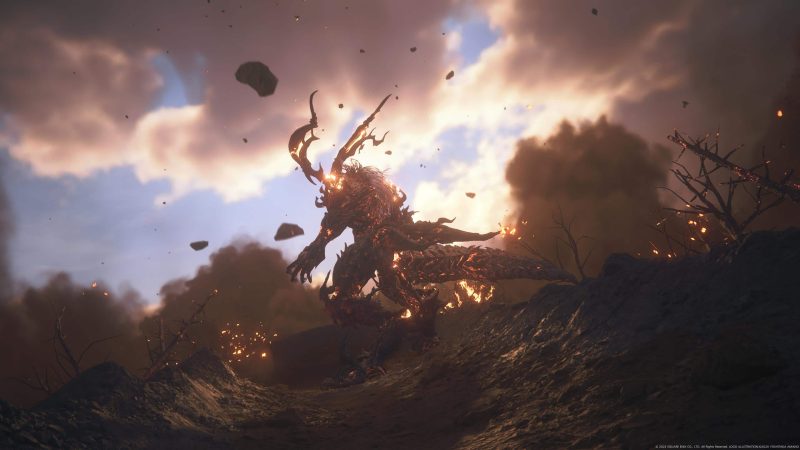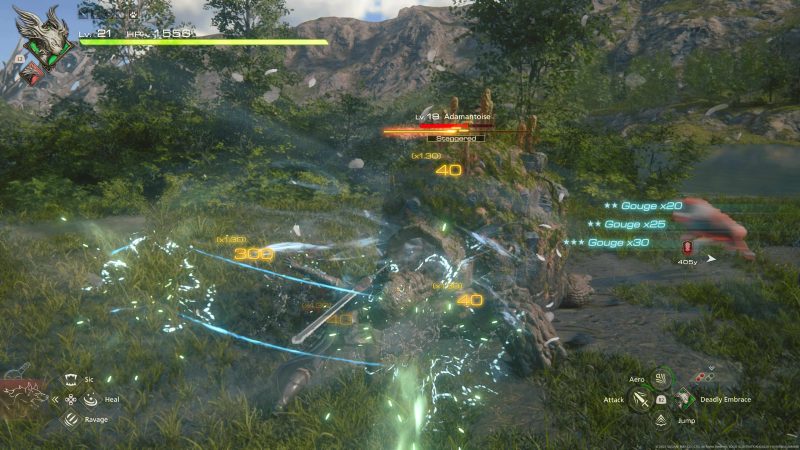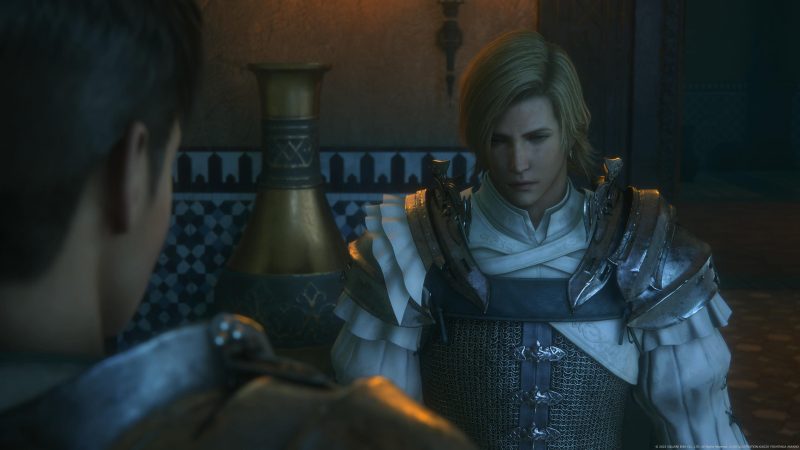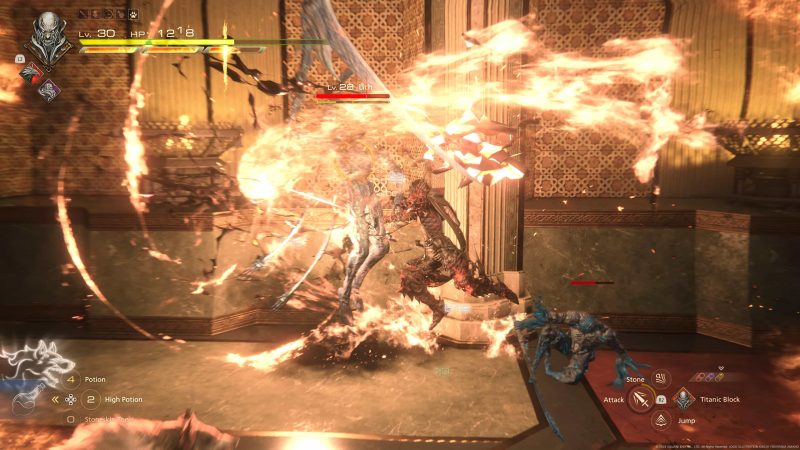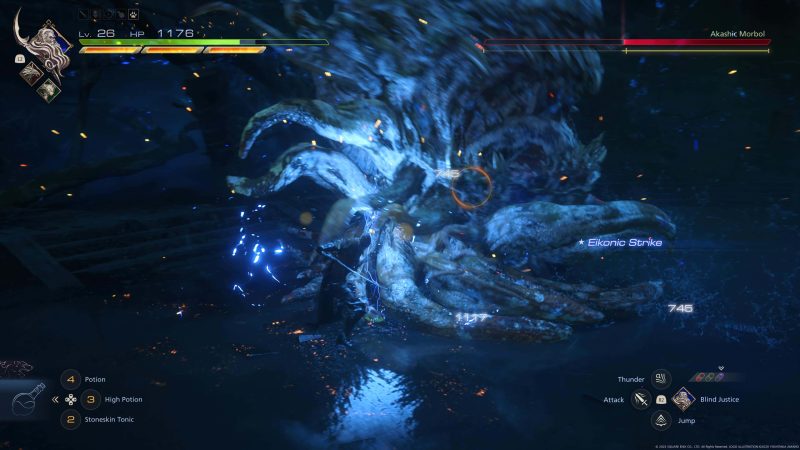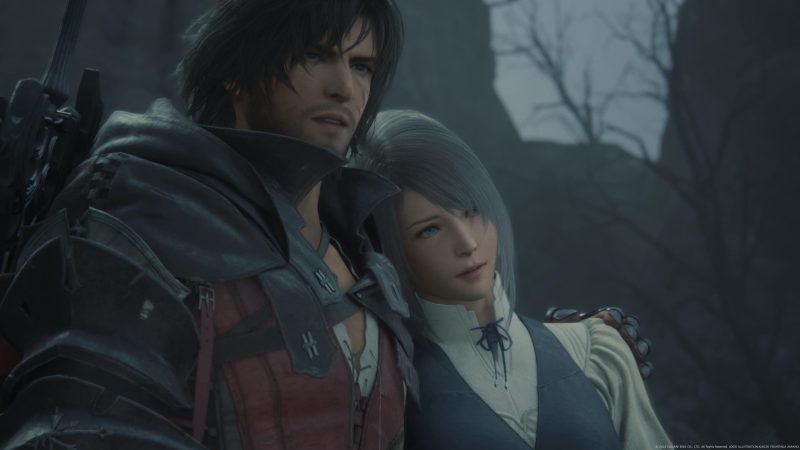Final Fantasy XVI Review (PS5) – Final Fantasy has gone through several different styles in the last decade. This most recent entry, Final Fantasy XVI, looks to play as far away from its roots as possible.
There is some truth to that. However, underneath the new presentation and style rests a strong story worthy of the Final Fantasy namesake, complete with an invigorating new style of combat.
Final Fantasy XVI Review (PS5) – Reaching Action RPG Status In Glorious Fashion, Complete With Franchise-Grade Narrative
Thirteen years have passed since you, Clive Rosfield, were in the fold of your royal family. You were duty-sworn to protect your younger brother, Joshua, since he was next in line to take the throne.
Soon, the picture-perfect image of this royal family begins to fray, with looming differences between king and queen taking root throughout the kingdom.
Just like much of the populous, you were born with the ability to channel and wield aether from the world around you. Leaders of the realm plaster people like you with black ink on their faces; hence the name Branded.
The king sympathizes with the Branded and offers them safe places to live and work in his kingdom.
However, the brand on your face is what dilutes the queen’s love for you. The queen’s disdain for the Branded aggravates the fissure forming in the royal kingdom.
In the dead of night, a coup erupts in the kingdom, with efforts directed at kidnapping your brother. In the efforts to escape, a cloaked assassin corners Joshua and kills him. To boot, once-believed allies assassinate the king.
That night, the royal family dissolves and the kingdom succumbs to the hate looming on its borders. Now, thirteen years later, you live solely on vengeance, blindly searching for the person who killed Joshua.
Not Another Teen Game
The game’s premise brings this entry into uncharted territory for the Final Fantasy franchise: a mature game rating. In basic terms, this means more blood, more sex, more violence.
In the sense of storytelling, it gives the dev-team the chance to let the characters show their true colors without the need for lofty or extensive exposition.
The entire premise revolves around war and social divides, and this approach allows the team to truly express the atrocities that come with war and social divides. Equally so, nothing in this game approaches gratuity or vulgarity for its own sake.
Characters swear when they’re pissed or scared or worried. Villagers die at the hands of those validated by their own beliefs. Citizens are openly and brutally classist to each other.
Still, through all of this, none of it is praised as positive or glorified behavior. These things are all heinous, and the game makes sure those acts look the part.
The mature rating is brand new ground for a Final Fantasy game, and the game leans into the rating without turning a Final Fantasy game into something else entirely.
On a technical note, the story itself barely passes the Bechdel Test despite there being a great many female characters. Regardless, the story itself remains something potent, with an absolute banger of an ending. Technicalities aside, this is a Final Fantasy story through and through.
Flexing The PS5
Just from the synopsis alone, it’s easy to see that Final Fantasy XVI is heavily story-driven. A great deal takes place in this 30-hour romp, with much of it coming through cutscenes.
This isn’t an inherent positive or negative, but some may not want to sit through all of it.
Nonetheless, these cutscenes offer some fantastic and quality content. For starters, cutscenes offer dynamic cinematography, occasionally going over the top for the Eikon fights. Also, not one voice actor in the lot drops the ball.
In particular, the cast of main characters delivers some wonderful lines of dialogue while still sounding natural (personal shout-out to Ralph Ineson for his delivery of Cid).
Benn Starr channels that gruff, almost monotone voice work with Clive, which ends up a bit low energy in passive scenarios. Still, he emotes so very well when the moment calls for it, especially in the closing act. Genuine emotion comes through his work, and we feel it.
Graphic fidelity in this game makes for an interesting conversation piece. Animations, motions, and character designs all feature great care and attention to detail.
This even carries over to random villagers or people you meet along the way.
None of them share faces, and all of them feature their own voice actor and facial animations. Those animations may not be as subtle or developed as we get from main characters, but they show how much more intricate game development can be now.
One area where the graphics don’t flex as hard is with your main Eikon, Ifrit. Fire animations and movement all look fantastic, showcasing the visual potential of the hardware.
Where it falls flat is with his rocky body, particularly with textures. Perhaps the earthy shaping of the Eikon plays into that, but it shows in close-ups, which happens often.
Occasionally, geographical textures share the same fate as Ifrit. Foliage and trees all look fantastic, but some base architecture or ground texture look a bit last gen. In the grand scheme of things, I only noticed these once I started getting more familiar with the game and the zones I ran around in.
Overall, the bombastic fight sequences steal the show. Oftentimes, it feels like you control a cutscene, flying all over the screen as you take it to your opponent. The sheer scale of many boss fights play into that as well.
As an Asura’s Wrath fan, I deeply enjoyed these boss fights, and they get bigger and better with each big baddie you face.
The Way Is Linear
This franchise has had to navigate the “linear gameplay” path several times, and this entry is no exception. From start to finish, you go from point A to point B to complete objectives and save the kingdom. Any game can be broken down to derivative variables like this.
To contradict this, Final Fantasy XVI does very little to hide its linear nature.
Instead, the game puts up blinders in order to keep you moving forward. Yes, the game has some open zones, much like you find in the Final Fantasy XIV MMO.
Either way, though, the maps serve more as a means of just wandering around versus avenues to explore. You can find chests sprinkled around, but the rewards most of the time are just the basic parts needed for crafting weapons. Specific and rare materials come from monsters.
A linear game is not a bad thing as long as it does it thoughtfully. In general, Final Fantasy XVI presents a well-constructed, engaging linear experience. The development team wants you moving forward with the story, and every aspect of the game plays into that intention.
The outlying negative in all of this is the amount of running around you need to do in order to reach new destinations. Considering how little the maps offer for exploration, that leaves wide expanses for you to traverse with little more to do than beat up the occasional baddies.
Granted, the maps themselves are beautiful and lush, but the impact of setpieces lose their initial luster after a couple ventures through them. This doesn’t break the game by any means, but the excess time spent running around can often take out some of the wind in the game’s sails.
Designed To Push Forward
Thankfully, like all RPGs before it, the game offers fast travel as well as a mount to get around a little quicker. Plus, if you’re so inclined, running around on your chocobo keeps you from automatically engaging in combat if you get close to enemies.
In a way, the game is designed for that kind of approach: Skip the random fights and stick to the story beats. Open world fights grant some experience and materials, but the experience is miniscule in comparison to quests, hunts, and event fights.
This allows you to choose between flying through the story without hitting massive difficulty spikes or farming for materials to dig into crafting.
Crafting is in the same boat. You can craft new weapons along the way, and you essentially obtain the materials you need from quests and event fights.
In that regard, the game does provide a crafting system, but the game doesn’t challenge you to obtain the vast majority of the materials, outside of the strongest weapon in the game, of course.
Still, this weapon only becomes available in New Game+, so the focused game experience makes more sense.
For what the game wants to do, I appreciate that all of the systems follow a similar mantra: Bring these in-game systems along without the game slowing down.
I just wish the maps were either more interesting to explore or more consolidated to reduce travel time-at least during the main quests.
Take It To The Battlefield
From the start, I liked how combat feels in this game. It’s visceral, much like Clive, and it just feels good to fight things. Plus, it’s simplistic to play. Like any action game, you can parry and dodge attacks, and you also obtain a block option later in the game.
To boot, you eventually obtain a Limit Break, which sees you let loose with fire-imbued attack flurries using normal attacks.
The game allows you different elements to use, letting you swap between them on the fly. You learn other elements, but only three can be equipped at one time. The catch to these elements is that, apart from the two elemental skills, you only get a magical cast with Triangle and an element-specific ability to the Circle button.
The two skills have their own cooldowns, while the magical cast and ability button can be used repeatedly.
Hands down, the coolest feelings in the game are executing a perfect dodge and a perfect block. The timing windows are generous enough to use them regularly but not so large that you can’t time it without a level of precision. The same goes for blocking, complete with generous timing windows.
Now, you can parry, but the timing to pull them off is so small. This is exacerbated by the time it takes to swing your weapon. You have to be nearly perfect to pull off a parry.
When you do, though, you greatly stagger the enemy and time slows down for a few seconds. The payoff is huge, but the execution requires a level of discipline that the rest of the game just doesn’t.
Action Time Battle
When I first started playing, I would activate all my skills at an enemy just to do damage. This left me waiting for cooldowns just to use the ability again, all while mashing Square to do basic attacks.
To boot, bosses and mini-bosses also have stagger meters that you need to contend with. If you use the wrong elements, they do generic damage.
Ultimately, combat looks and feels a fair deal like Devil May Cry or Bayonetta. The biggest difference is that you only get so many skills, each with a unique cooldown. You can mash attacks, but you cannot use skills non-stop.
This is what I consider the remnants of the Active Time Battle bar. Final Fantasy VII did this, and XVI is following suit in a simplified form.
Basic attacks now fill the space that ATB used to occupy. Between skills, you use attacks or blocks or dodges to fight and then execute skills when you need them. Combat feels far more in your control, even though the turn-based elements no longer exist.
Accessibility Approach
As mentioned above, much of Final Fantasy XVI is a catered experience, keeping you moving forward with only the kind of resistance that causes suspense versus difficulty. This allows many players to experience this game and not need a deep understanding of the genre.
To further emphasize that approach, the game also provides you with rings you can equip.
These automate commanding your canine companion, dodging, and healing. These rings make the game much, much easier.
These rings are also completely optional. Put them on if you get stuck or take them off if you want more control of your combat experience.
One ring I consider middle ground is the one that slows time just before you get hit. This means that parrying is about as accessible as dodging is.
Personally, I wasn’t too crazy initially about these rings, but they exist for choice. There’s a compelling story and experience here, and the minds behind it ultimately want to share it with as many people as possible.
I ended up using the dodge ring on the last sequence of the game just because I wanted to feel everything in the moment without anything standing in my way. Not forcing these is wonderful because the experience is not diluted if you choose or need to use them.
Leveling Up The Franchise
Even if it looks different, Final Fantasy XVI wears its namesake well. Hardcore fans of RPGs with deep systems may balk at what Final Fantasy XVI offers, but they cannot dispute the game’s story meeting and exceeding all expectations.
The overall linear experience reduces satisfaction from exploring the maps, but the game rewards you more for digging into the story and lore versus the world.
Pacing takes a few significant hits along the way, especially leading up to the final act, and a few textures look last gen.
Nonetheless, the payoff at the end of the game alongside the visceral, engaging combat greatly supercede the game’s few oddities.
Final Fantasy XVI launches on PS5 on June 22, 2023.
Review code kindly provided by publisher
